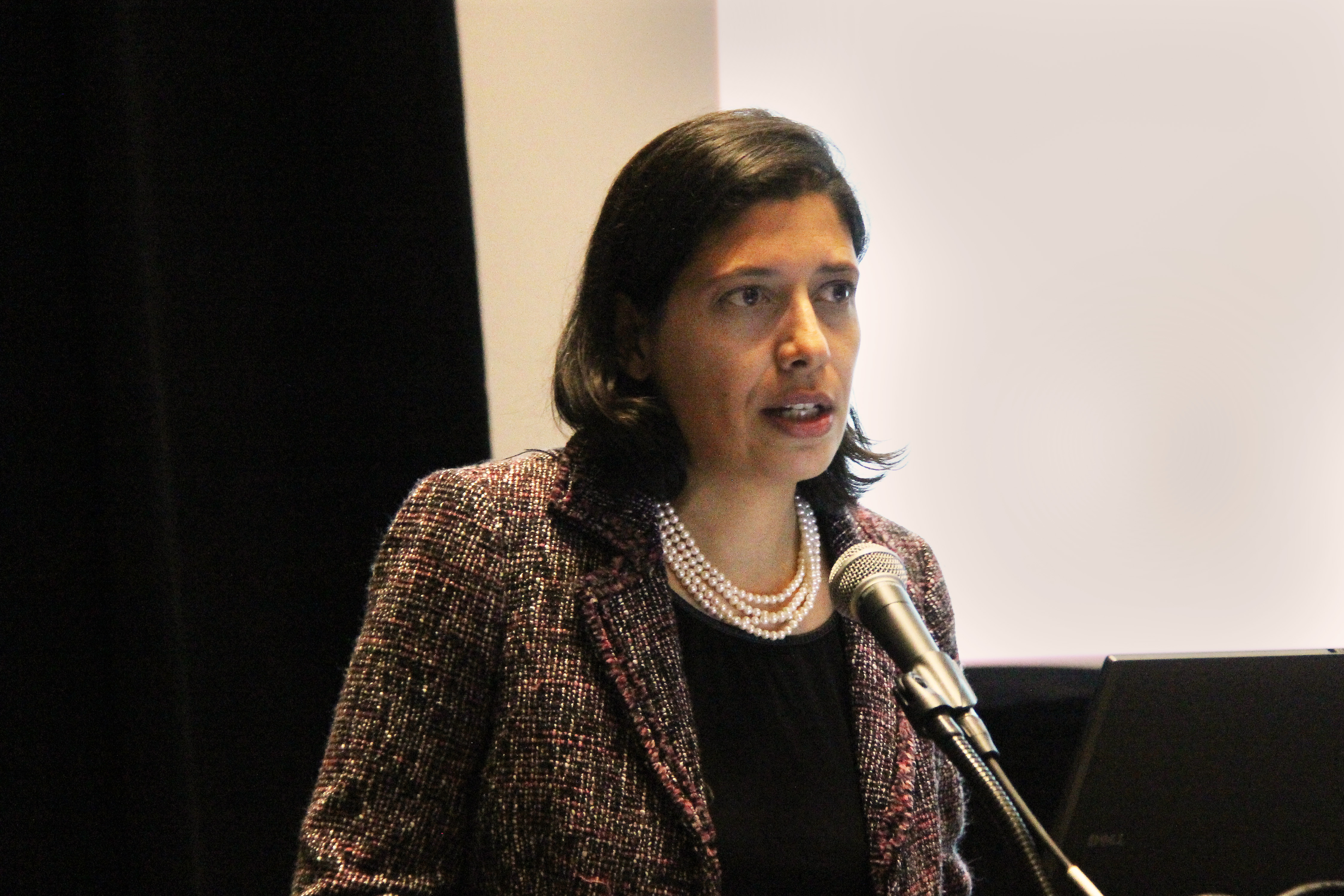Latest News
Research
Massey oncologist identifies underrepresentation of racial and ethnic minorities in clinical trial participation for gynecologic cancers
May 23, 2017

In the United States in 2017, it is estimated that more than 95,000 women will be diagnosed with one of the three most common gynecologic malignancies: cervical, ovarian and uterine cancer, according to the American Cancer Society. A recent study underlines the ongoing need to improve representation of racial and ethnic minorities and elderly patients in national clinical trials.
The research led by Sarah Temkin, M.D., director of Gynecologic Oncology at VCU Massey Cancer Center, found significant disparities between demographic populations of patients diagnosed with a gynecologic cancer and participants in clinical trials for gynecologic cancers, most notably for ovarian cancer.
Temkin’s study, published in Gynecologic Oncology and federally funded through the National Cancer Institute (NCI), examined 156 NCI-sponsored ovarian, uterine and cervical cancer clinical trials between 2003 and 2012, in which more than 18,900 patients were enrolled. National cancer incidence rates were pulled from the NCI Surveillance, Epidemiology and End Results (SEER) program, which archives statistics from 18 population-based cancer registries, covering more than one-fourth of the U.S. population. The intent was to learn and better understand how race, ethnicity, age and insurance status among clinical trial participants compared to the overall population of women diagnosed with a gynecologic cancer.
“Increased access to clinical trials is highly important to us at Massey. Enrolling a population onto clinical trials that is reflective of the U.S. population is critical to assessing the effectiveness of new therapies and to ensure existing health disparities are not magnified by disparities in the research population,” said Temkin, the Dianne Harris Wright Professorship for OB-GYN Oncology Research.
Previous research has indicated that the overall five-year survival rates for ovarian, uterine and cervical cancers were lower among black women than white women, and Hispanic women exhibited greater incidence and mortality rates for cervical cancer.
Temkin’s study determined that the largest disparities in regard to racial, ethnic and age-based populations were observed among ovarian cancer clinical trials:
- Black patients represented more than 11 percent of all ovarian cancer diagnoses. However, they only made up approximately four percent of participants in the observed ovarian cancer clinical trials during the same time frame.
- White women comprised 92 percent of ovarian cancer trial participants, while representing only 83 percent of the incident population.
- Hispanic patients accounted for more than 14 percent of all ovarian cancer incidences in the U.S., but only represented around four percent of clinical trial participants.
- Women aged 75 years and older were underrepresented in the clinical trial population across all three diseases, with more than a 10 percent differential seen among ovarian cancer trial accrual.
Regarding the insurance status of clinical trial participants, ovarian cancer patients with private insurance enrolled more often compared to the incident population. Patients insured through Medicaid participated at a much lower rate overall, and uninsured women were more likely to enroll in a cervical cancer trial than the general population.
“This research indicates a need for deliberate efforts from every component of the clinical trials infrastructure to enroll representative populations in specific areas of need, and improve the racial, ethnic and age distribution of patients accrued to clinical trials,” Temkin said.
 Sarah Temkin, M.D.
Sarah Temkin, M.D.
Some of the proposed strategies to address these disparities include the use of web-based recruitment techniques to increase minority awareness and enrollment, enhancing communication from patient navigators to spread awareness and focusing attention to underrepresented populations to diversify participation demographics.
There are many factors that may contribute to these disparities, including patient trust, family support, health literacy and access to transportation. Geographic proximity to a clinical trial location has also been shown to be a complication for many metastatic cancer patients. In fact, up to 15 percent of all women in the U.S. live further than 50 miles from a gynecologic oncologist, according to a separate study published in Gynecologic Oncology.
Strict eligibility requirements have also been found to unnecessarily exclude many participants who could otherwise benefit from new and innovative treatments, leading many physicians and researchers to call for less stringent clinical trial enrollment criteria.
Although the ultimate decision to participate in a clinical trial falls in the hands of the patient, prior research shows the vast majority of cancer patients will elect to enroll in a trial after knowing it exists as an available treatment option. However, less than four percent of adult cancer patients enroll in open clinical trials, according to Temkin.
“Physician recommendation for clinical trials is the most important tactic for patient participation. Ensuring patients are aware that a clinical trial exists for them is something to which we are dedicated here at Massey,” Temkin said.
Temkin’s research analyzed overall clinical trial participation for gynecologic cancers by U.S. state, and found that New York, Ohio and Oklahoma were responsible for the largest number of clinical trial participants during the studied decade, although California, Texas and Florida contain the largest percentages of the overall U.S. population. Oklahoma accounted for seven percent of all gynecologic cancer trial participants, while the state population is only representative of approximately one percent of the nation’s population.
Temkin hypothesized that this disproportionate accrual rate in states like Oklahoma can be attributed to supportive institutional systems that reward the dedication and hard work of physicians who recruit clinical trial participants.
At Massey, there are eight clinical trials available to patients with gynecologic malignancies as of May 2017. For a full list of active trials open at Massey, visit www.massey.vcu.edu/trials.
Temkin collaborated on her published research with Elise Kohn, M.D., Lori Minasian, M.D., Grace Mishkin, M.P.H., and Anne-Michelle Noone, M.S., of the National Cancer Institute.
Written by: Blake Belden
Related News
Research
Robert A. Winn Clinical Investigator Pathway Program welcomes fourth cohort of medical student awardeesJul 8, 2025
Research
“We’re aiming for a cure.” Massey and VIMM researchers achieve potential breakthrough in brain cancer treatmentJun 24, 2025
Research
Massey researchers discover new genetic target that could shape the future of liver cancer treatmentJun 23, 2025

Get access to new, innovative care
Treatments in clinical trials may be more effective or have fewer side effects than the treatments that are currently available. With more than 200 studies for multiple types of cancers and cancer prevention, Massey supports a wide array of clinical trials.

Find a provider
Massey supports hundreds of top cancer specialists serving the needs of our patients. Massey’s medical team provides a wealth of expertise in cancer diagnosis, treatment, prevention and symptom management.
